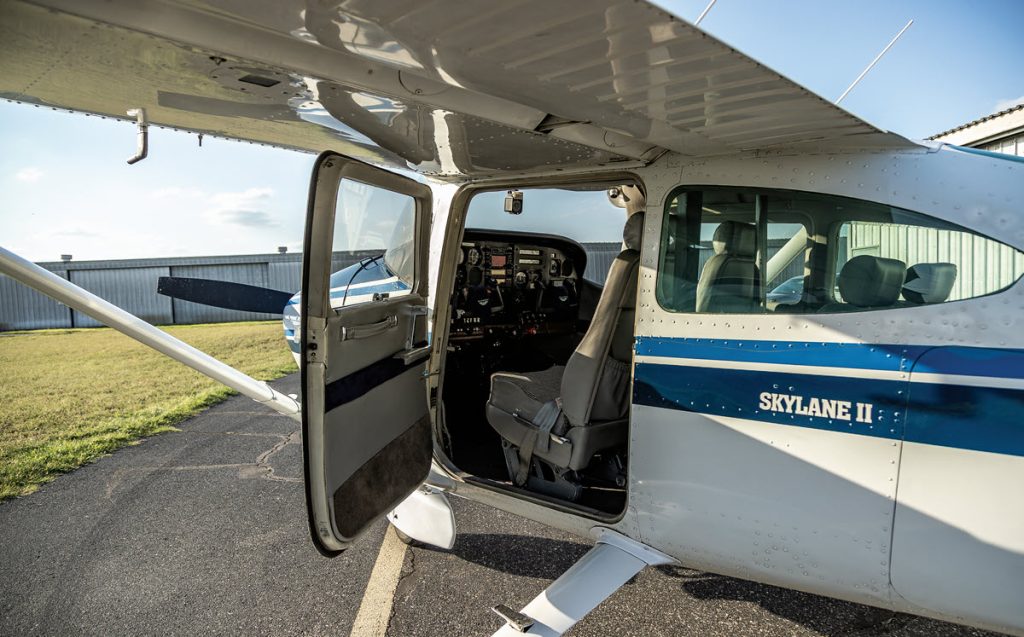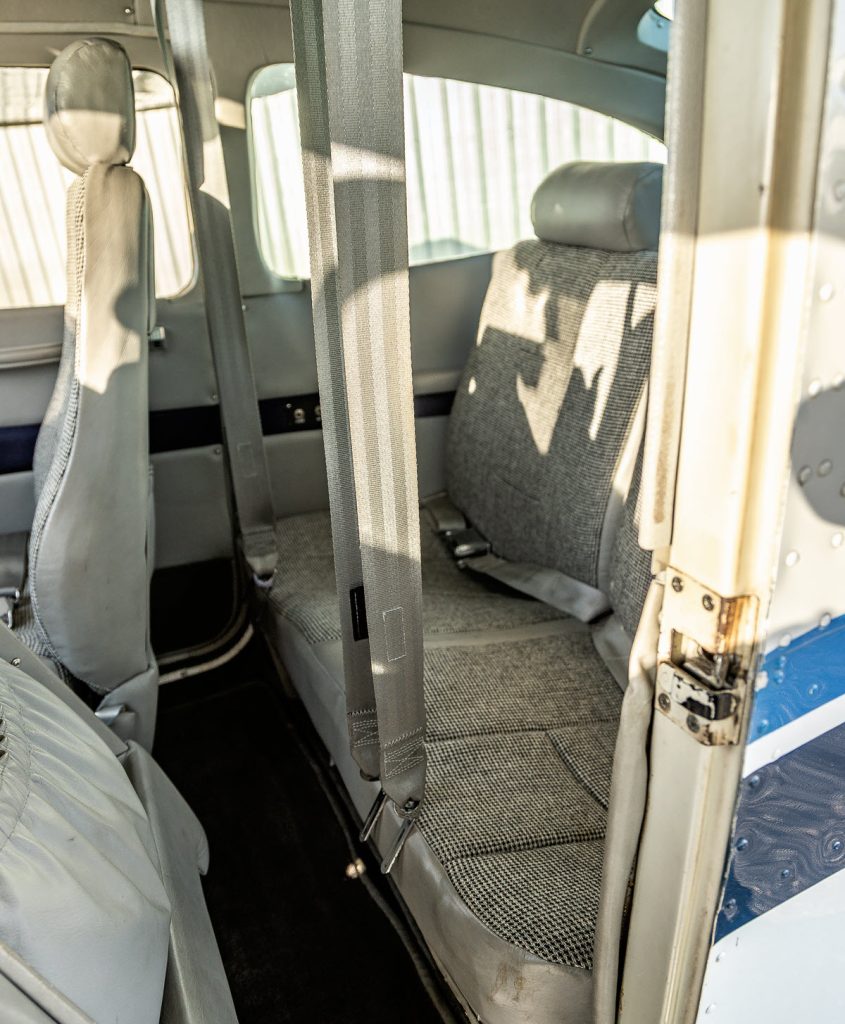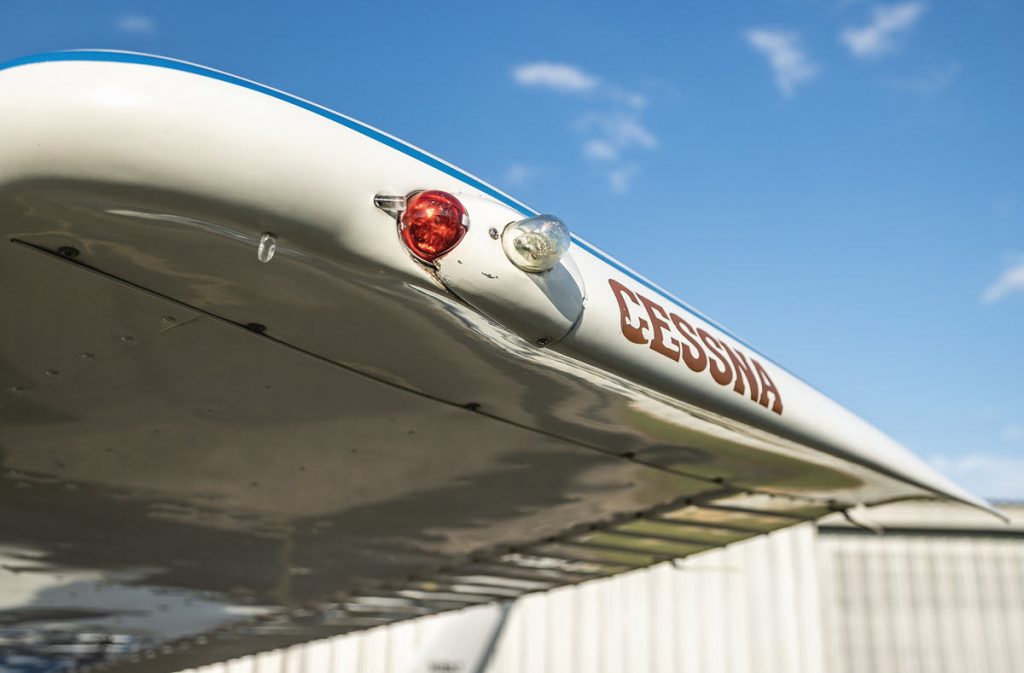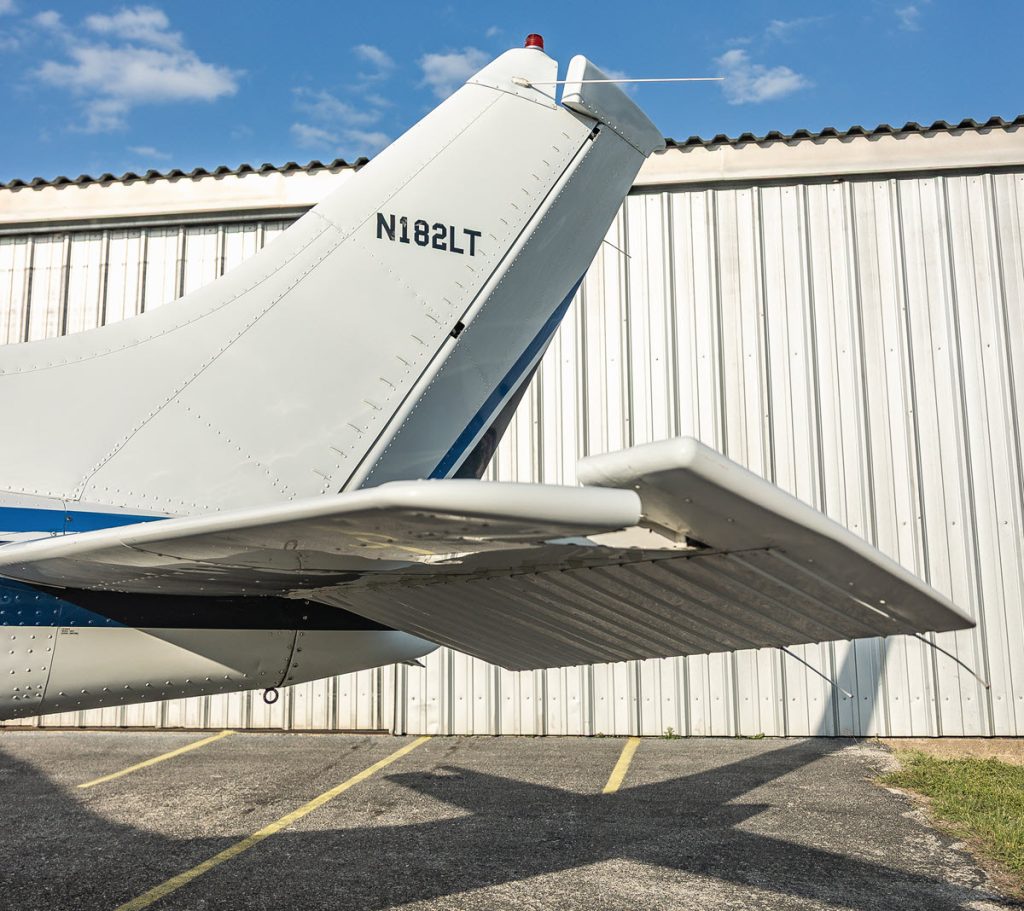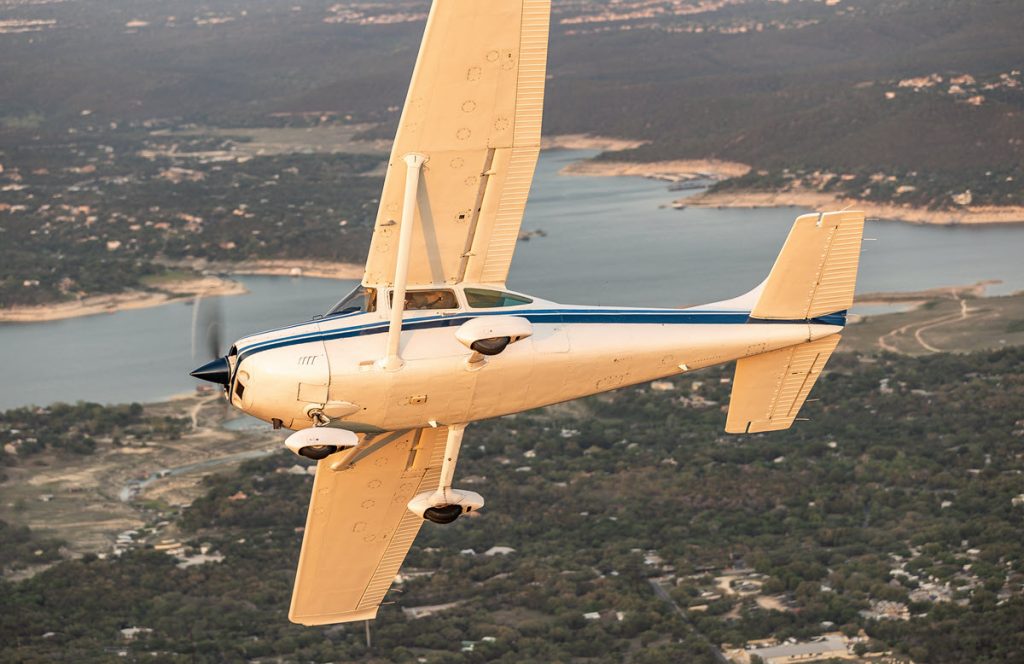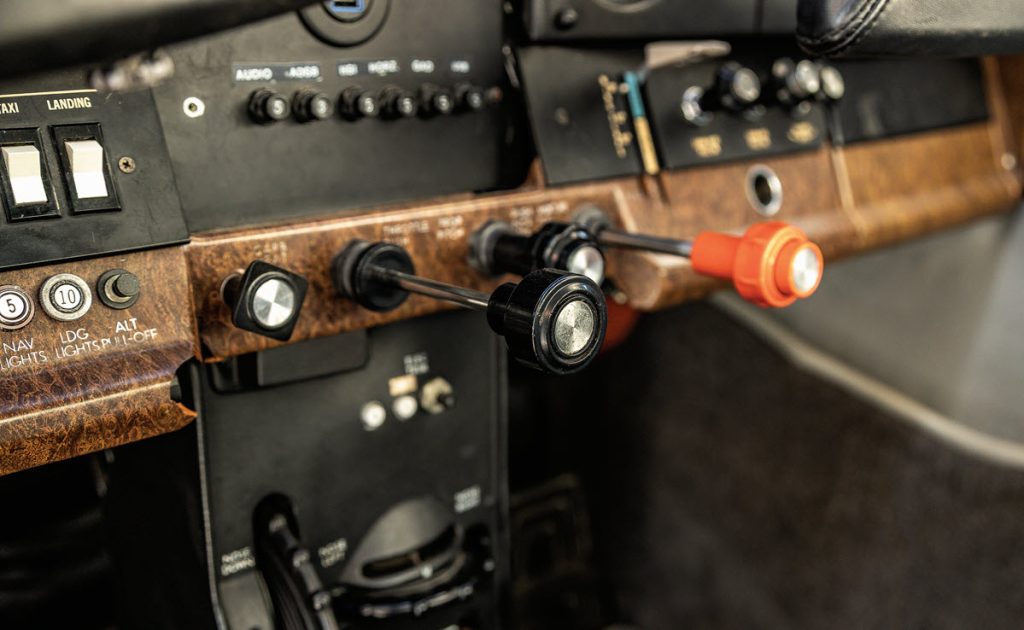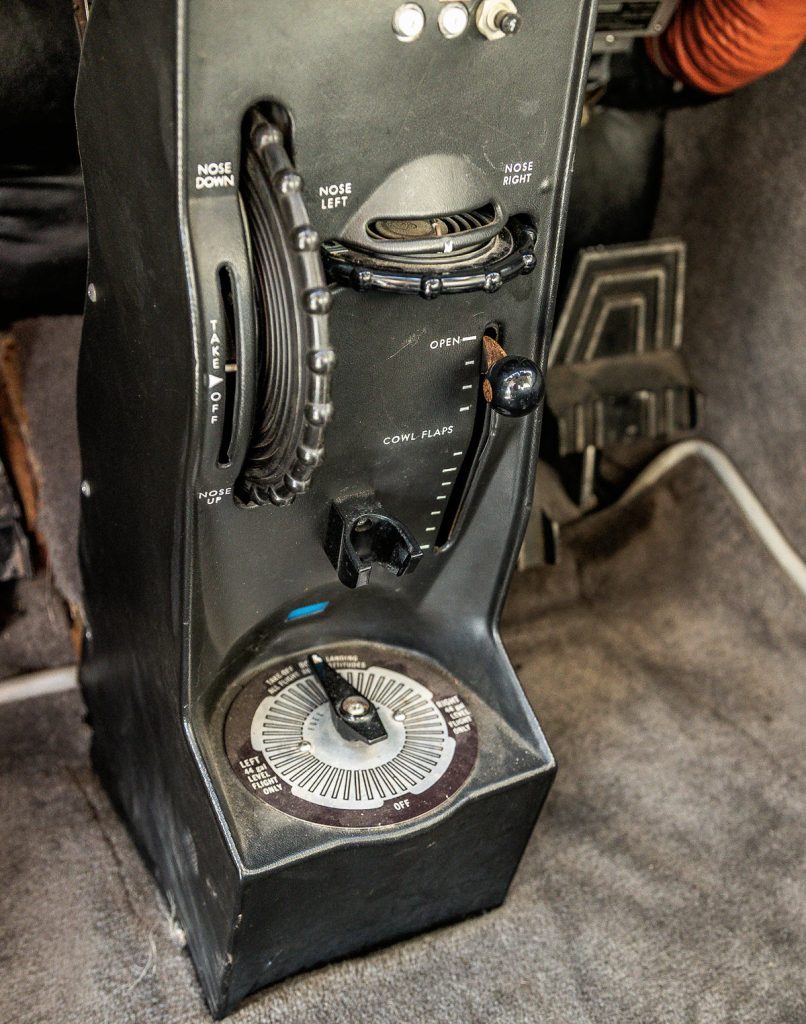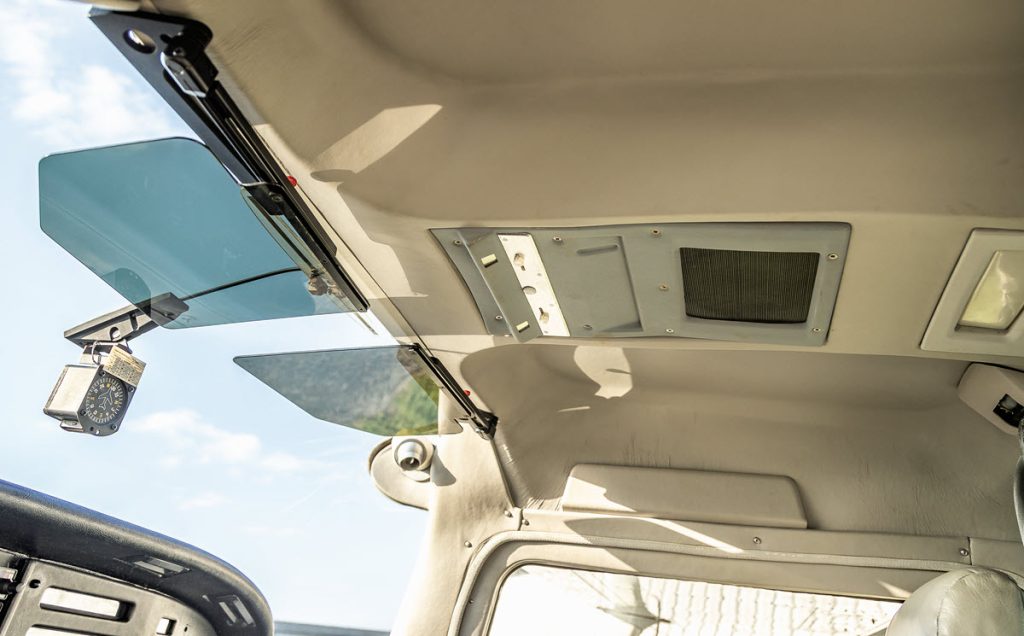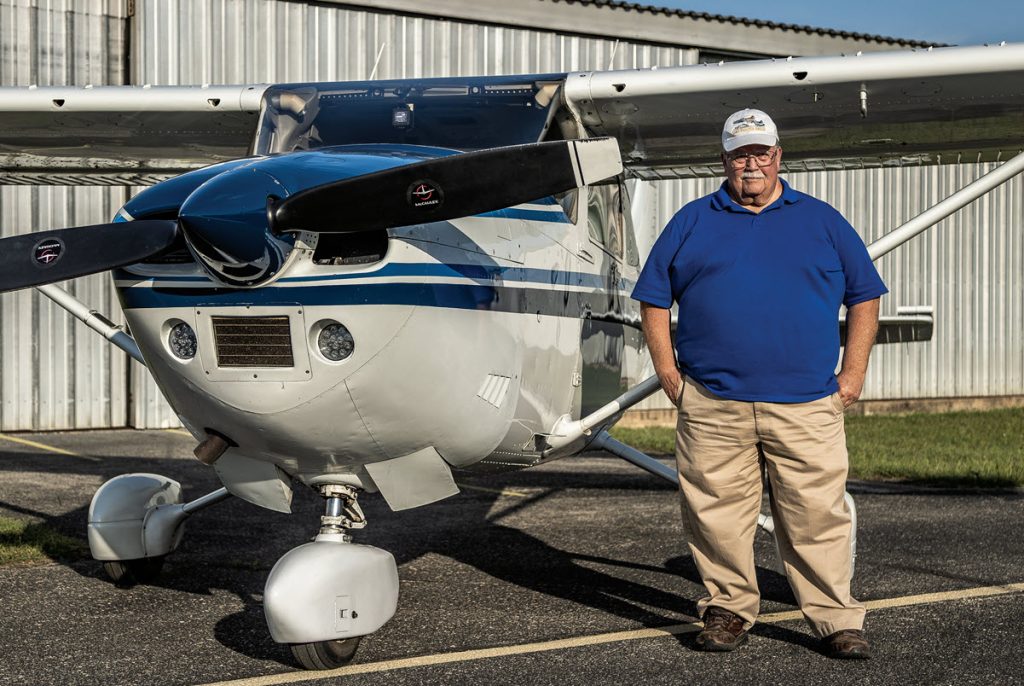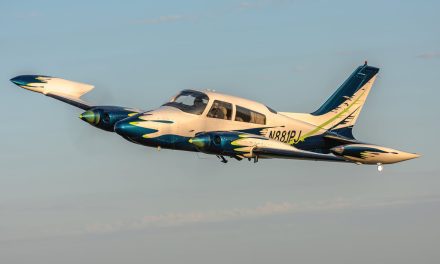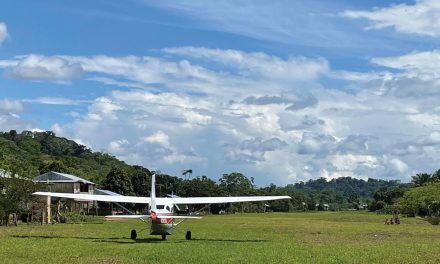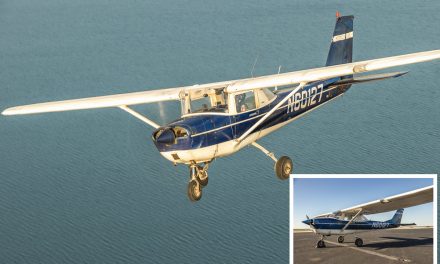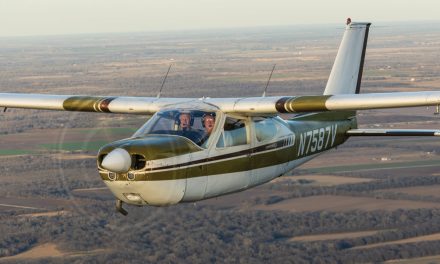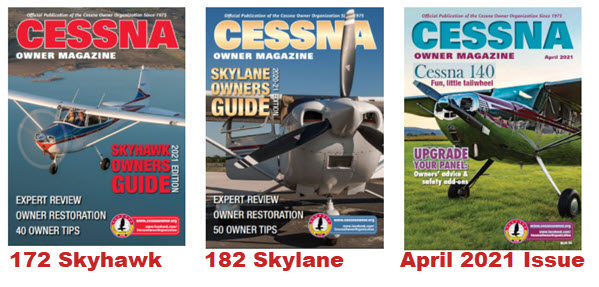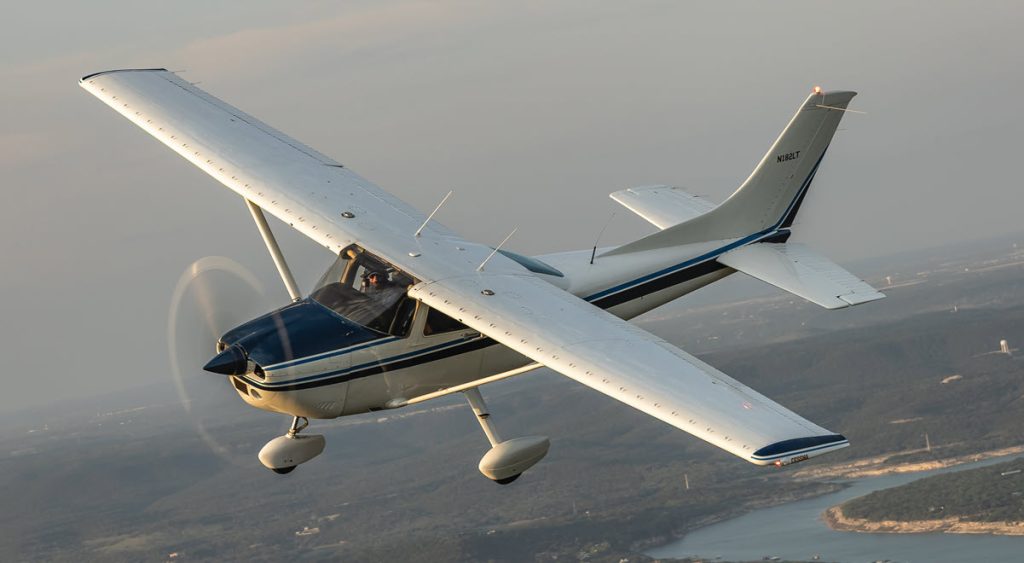
By Michelle Adserias
It all began with a P-51 Crazy Horse. Richard Smith was at Sun ‘n Fun in 1991 and jumped at the opportunity to take a ride in the Crazy Horse. That experience convinced him that he needed to become a pilot. “I then spent a year developing a plan to execute that desire,” Richard explained.
And execute it he did! He boldly jumped into his commitment by purchasing a 1979 Cessna 182Q. He used his first airplane to complete his training with a friend and earn his PPC at the Executive Airport in Austin, Texas. He also did some traveling for leisure in his Cessna 182Q. Later in his flying years, he owned a Cessna 210 which he has since sold.
When Richard’s son, Layton, followed his father’s lead and began learning to fly, the idea of owning a family airplane became more appealing.
Richard already knew what he liked. “I appreciate the quality of the 182 and it’s a terrific all-around airplane. It’s relatively easy to fly, makes a great investment platform, plus can carry great loads at a reasonable speed and with good economy.”
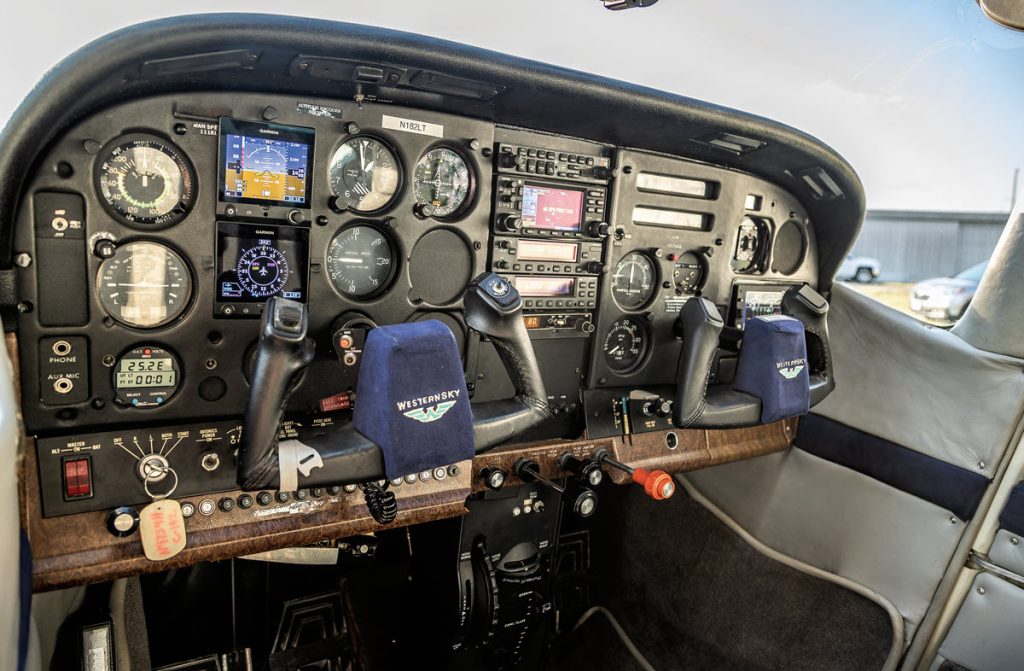
With those positive attributes in mind, Richard began shopping for a new airplane. He decided on a 1981 Cessna 182R. At the time, the tail number was N9739H. Richard very recently changed it to N182LT.
Why the change? Richard was looking for an N number that would be easy to hear, say, and remember. Obviously, the 182 indicates the airplane. The Lima Tango has a very minor family reference that should not pose a problem for any future owner. The only thing that complicated the change was the fact that this aircraft is owned by an LLC, not Richard alone.
Thoughts on Co-Ownership
Richard did purchase this aircraft on his own, initially. But when Layton got his private license and completed some transition training to meet the company’s requirements, they added him to the insurance.
Last year, when Richard turned 80 years old, he finally conceded he wasn’t flying as much. Because of his work schedule, Layton wasn’t taking the airplane out of the hangar much, either. “Rather than sell it, I decided it was best for the plane to add a partner,” Richard said.
They began interviewing potential partners. Within a few weeks and a few interviews, they found a local pilot, John Keesey, to add to the group. “As you might speculate, it took a few months for everyone to settle into the new system of communication necessary for the added ownership. However, it has worked out to everyone’s benefit and will be much better for the airplane.”
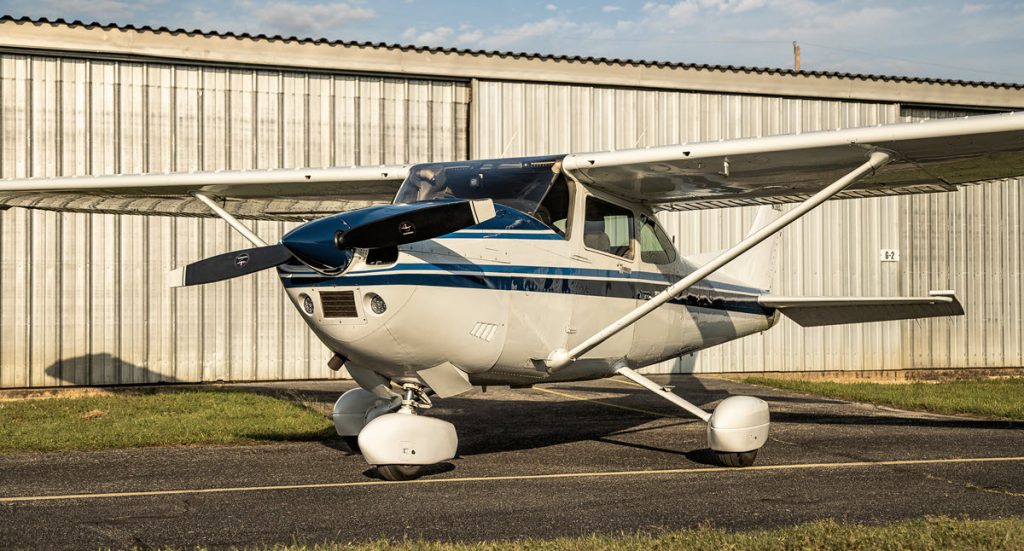
An Excellent Investment
When Richard purchased in 2020, it was about 40 years old. However, the aircraft’s previous owners had already made some crucial updates both inside and out. Just as it was rolling into the 21st century, it got a new paint job and a refurbished interior.
The owners at that time also began updating the avionics. Though it does not have a full glass panel, it has all the upgrades today’s pilot would want or need. The key upgrade Richard was looking for was an autopilot with altitude hold — this plane had a Genesys Aerosystem S-TEC 30. “Nothing makes flying IFR cross country nicer than allowing the autopilot to take on the hard work of heading and altitude.”
The plane also came with a Garmin GNS 430 with WAAS, a GNC 255A Nav/Com, and a Garmin GTX 345 transponder. It had GPS for flying, a backup radio for communication, and a transponder for ADS-B, both IN and OUT.
Additionally, it came with dual Garmin G5s for HSI and attitude indicator, plus electronic trim controls. This was the perfect middle combination for the father who learned on “steam” gauges and the son who learned on flat panel screens.
There is only one notable update this Cessna 182R has needed since. The screen on the older JPI unit went out and there was no replacement available. So, Richard and his partners replaced the unit with a new JPI EDM 730 with tachometer, manifold pressure, and fuel flow information. This upgrade makes monitoring the engine very easy. And the bonus? JPI offered the upgrade at a very reasonable price.
Maintaining this airplane has been relatively easy. Other than repairing cylinders and replacing the shimmy damper, there have not been any maintenance issues. McFarland and Aircraft Spruce are Richard’s go-to places for parts.
Overall, this Cessna 182 was an excellent choice for Richard’s situation. He noted it would be nice to have more than one plane in the hangar to fulfill different missions, just as many people have more than one car in the garage for various ground transportation purposes. “That being impractical, the Cessna 182 is the best all-use airplane.” Although Richard is finding it a bit harder to get in and out of as he gets older, it is still easy to handle in almost any kind of weather.
On Mission
Richard expects their Cessna to see at least 50 hours of flight time in the upcoming year. Both of his partners, Layton and John, will be working on their instrument ratings. And they have some outings planned for the upcoming year. Like many area pilots, they enjoy flying to Fredericksburg for lunch and a jaunt into town, occasionally.
One of his favorite destinations is EAA AirVenture. Richard has attended the Oshkosh, Wisconsin air show over 30 times since 1992. In 2022, he and a couple of friends flew the C-182 to the show. They left home at 7:30 a.m., made two fuel stops, and landed at AirVenture at 4:00 p.m. “That is about how long it takes when we take an airliner into Chicago then drive up,” Richard said.
It’s a Small World
We often talk about the camaraderie found among pilots. Richard is no stranger to the ties that make the aviation community a small world.
After searching for three years, Richard found N182LT in a north Texas town where one of his friends is living. Richard asked his friend whether he was familiar with the airplane and its owner. Not only did he know the owner, the plane was parked in the hangar next door.
Even more amazing was that one of the previous owners was an acquaintance of Richard’s. They had met through EAA’s Warbirds of America. “The longer we stay in aviation, the smaller the world seems.”
Richard’s interest in Fairchilds began when he learned his father first flew in one as a cadet during World War II. Sadly, his father did not survive the war. But his flight history inspired Richard to learn more about the Fairchild PT-19, and eventually purchase two of them, one of which is still in his hangar. He and his two partners don’t fly it often anymore, but it has made nine trips to AirVenture over the years. And his son, Layton, is now learning to fly a tailwheel airplane, which would make his grandfather proud.
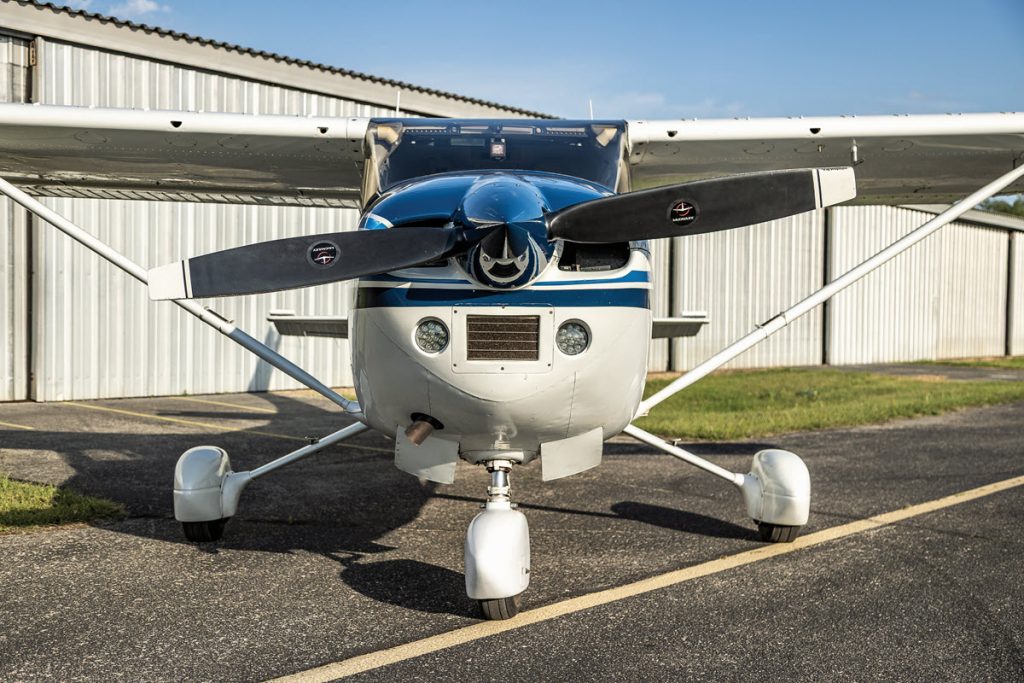
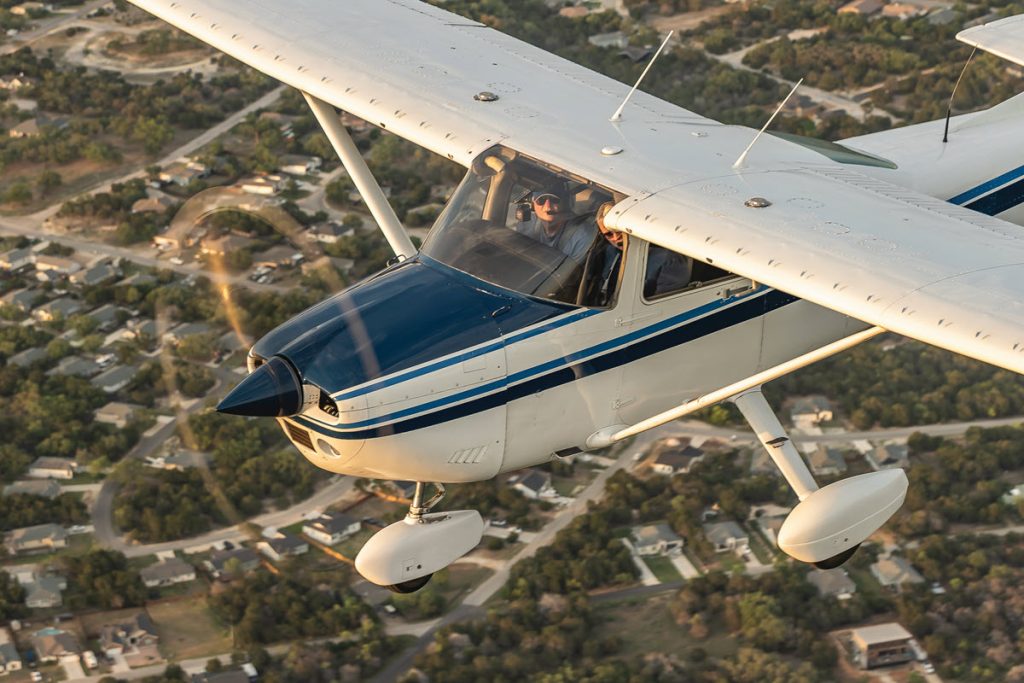
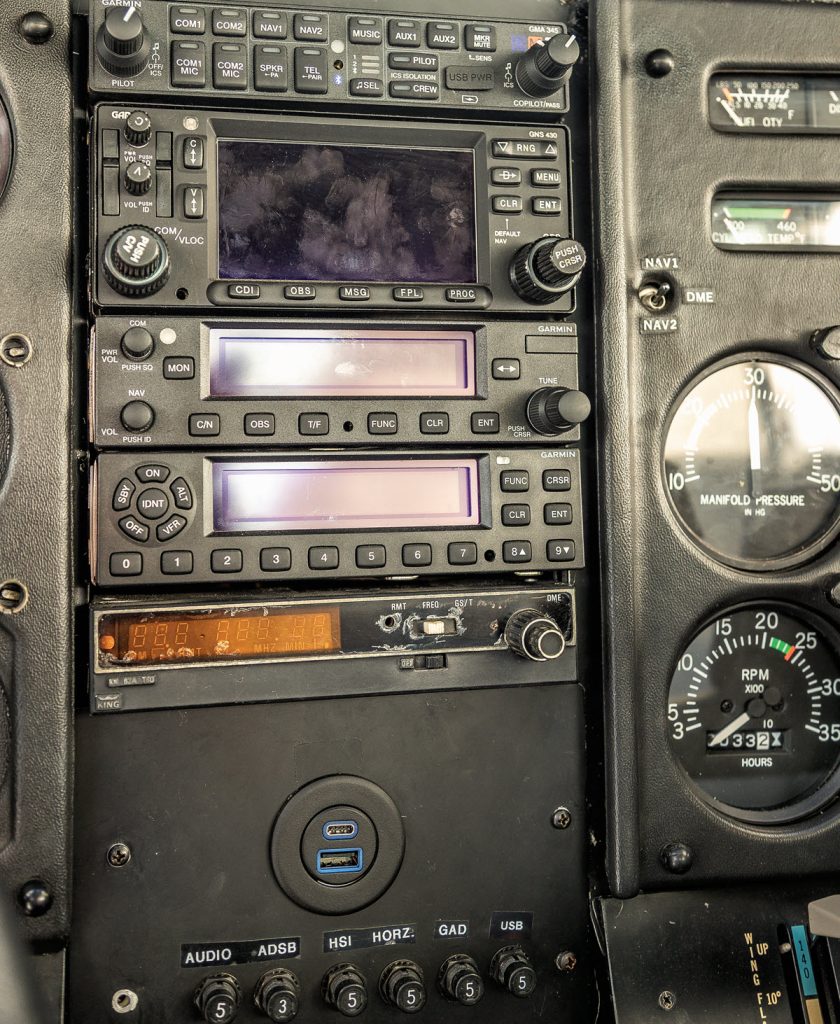
EAA WARBIRDS IN REVIEW
History comes alive each year when the EAA Warbirds of America bring their aircraft and their stories to Warbirds in Review at EAA AirVenture.
The informal sessions vary from year to year but include a look at restoration, operation, and other aspects of owning a historical aircraft, spotlights on veterans’ stories and flying experiences, stories from ground crew and other support operations members, entertainment, and more. It’s an excellent way to meet and celebrate military heroes who often view themselves as people who were just doing their jobs, nothing more.
Attention Warbird Amateur Radio Operators
This year, The Warbird Board of Directors is sponsoring a special event station for Warbird amateur radio operators. All Warbird members with current amateur licenses are invited to operate W9W during daylight hours. (Non-licensed Warbird members may participate with supervision.) Visit www.eaa.org for more information.
Have a website login already? Log in and start reading now.
Never created a website login before? Find your Customer Number (it’s on your mailing label) and register here.
JOIN HERE
Still have questions? Contact us here.

